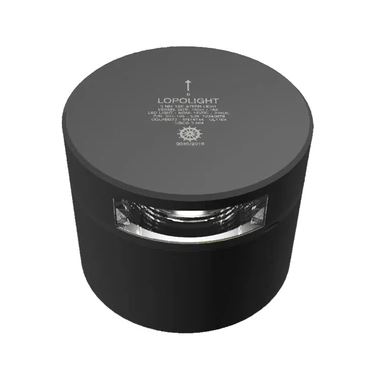Direct mail marketing remains a powerful tool in the real estate industry. Despite the rise of digital marketing, direct mail has not lost its relevance. When executed correctly, it can yield impressive results. This guide explores the various aspects of real estate direct mail marketing, offering insights and strategies to help you maximize its potential.
The Power of Direct Mail in Real Estate
Direct mail marketing involves sending physical promotional materials to potential clients. In real estate, this could include postcards, newsletters, brochures, and personalized letters. Unlike digital ads that can be easily ignored or deleted, direct mail pieces have a tangible presence that can capture attention and leave a lasting impression.
Why Direct Mail Works
- Tangibility: Direct mail is a physical item that recipients can hold, making it harder to ignore than an email or online ad.
- Targeted Reach: Direct mail allows for precise targeting. You can send materials to specific demographics, neighborhoods, or previous clients.
- Personalization: Customizing your mail to address recipients by name or including tailored content increases engagement.
- High Open Rates: Direct mail often has higher open rates compared to emails, which can be filtered into spam folders.
- Long Shelf Life: A well-designed piece of direct mail can stay in a recipient’s home for days, weeks, or even months, increasing the chances of a response.
Crafting an Effective Direct Mail Campaign
To create a successful direct mail campaign, follow these essential steps:
1. Define Your Goals
Start by clearly defining what you aim to achieve with your direct mail campaign. Common goals in real estate include:
- Generating leads
- Promoting a new listing
- Increasing brand awareness
- Inviting prospects to open houses or events
Having a clear objective will guide your messaging, design, and call to action (CTA).
2. Identify Your Target Audience
Identify who you want to reach with your direct mail. This could be:
- Homeowners in a specific neighborhood
- Renters looking to buy
- Investors seeking properties
- Previous clients
The more specific your audience, the more personalized and effective your message can be.
3. Design Compelling Mail Pieces
The design of your direct mail piece plays a crucial role in capturing attention and conveying your message. Consider the following elements:
- Eye-catching visuals: Use high-quality images of properties, your team, or the neighborhood.
- Clear headlines: Make sure the main message is immediately visible.
- Concise copy: Keep the text short and to the point. Highlight key benefits and features.
- Strong CTA: Encourage recipients to take action, whether it’s visiting your website, calling you, or attending an event.
- Contact information: Ensure your phone number, email, and website are easy to find.
4. Personalize Your Message
Personalization can significantly increase the effectiveness of your direct mail. Address recipients by their name and tailor the content to their specific needs and interests. For example, if you’re targeting first-time homebuyers, include information relevant to them, such as financing options and starter homes.
5. Choose the Right Format
There are various formats for direct mail API, each with its own advantages:
- Postcards: Cost-effective and great for quick messages and stunning visuals.
- Brochures: Provide more space for detailed information and multiple images.
- Newsletters: Ideal for regular communication, updates, and educational content.
- Letters: Add a personal touch and can include more detailed information.
6. Print and Send
Once your design is finalized, choose a reputable printing service to ensure high-quality results. Pay attention to paper quality, printing techniques, and finishes. After printing, select a reliable mail service to ensure timely delivery.
Measuring Success
To gauge the effectiveness of your direct mail campaign, track the following metrics:
- Response rate: The percentage of recipients who take the desired action.
- Conversion rate: The percentage of responses that result in a sale or lead.
- Return on Investment (ROI): Compare the revenue generated from the campaign to the costs involved.
- Customer feedback: Gather feedback from recipients to understand what they liked and what can be improved.
Case Studies and Success Stories
Real estate professionals have found great success with direct mail marketing. Here are a few examples:
- Agent A sent personalized postcards to homeowners in a specific neighborhood, highlighting recent sales and offering free home valuations. The campaign resulted in a 10% response rate and several new listings.
- Brokerage B used a combination of newsletters and postcards to keep previous clients informed about market trends and new listings. This ongoing communication helped maintain relationships and generated repeat business.
- Developer C launched a direct mail campaign targeting investors, featuring detailed brochures about a new development. The campaign led to significant investor interest and pre-sales.
Best Practices and Tips
To optimize your direct mail marketing efforts, consider these best practices:
- Segment your audience: Divide your audience into smaller segments based on demographics, interests, or behavior to create more targeted messages.
- Test and refine: Experiment with different designs, messages, and formats. Use A/B testing to determine what works best.
- Integrate with digital marketing: Combine direct mail with digital strategies like email marketing, social media, and your website for a comprehensive approach.
- Follow up: Don’t rely solely on the initial mail piece. Follow up with additional mailings, phone calls, or emails to nurture leads.
Conclusion
Direct mail marketing remains a valuable strategy for real estate professionals. Its ability to reach a targeted audience with personalized, tangible messages makes it a powerful tool in generating leads, building relationships, and closing deals. By following the steps and best practices outlined in this guide, you can create effective direct mail campaigns that drive results and grow your real estate business.




